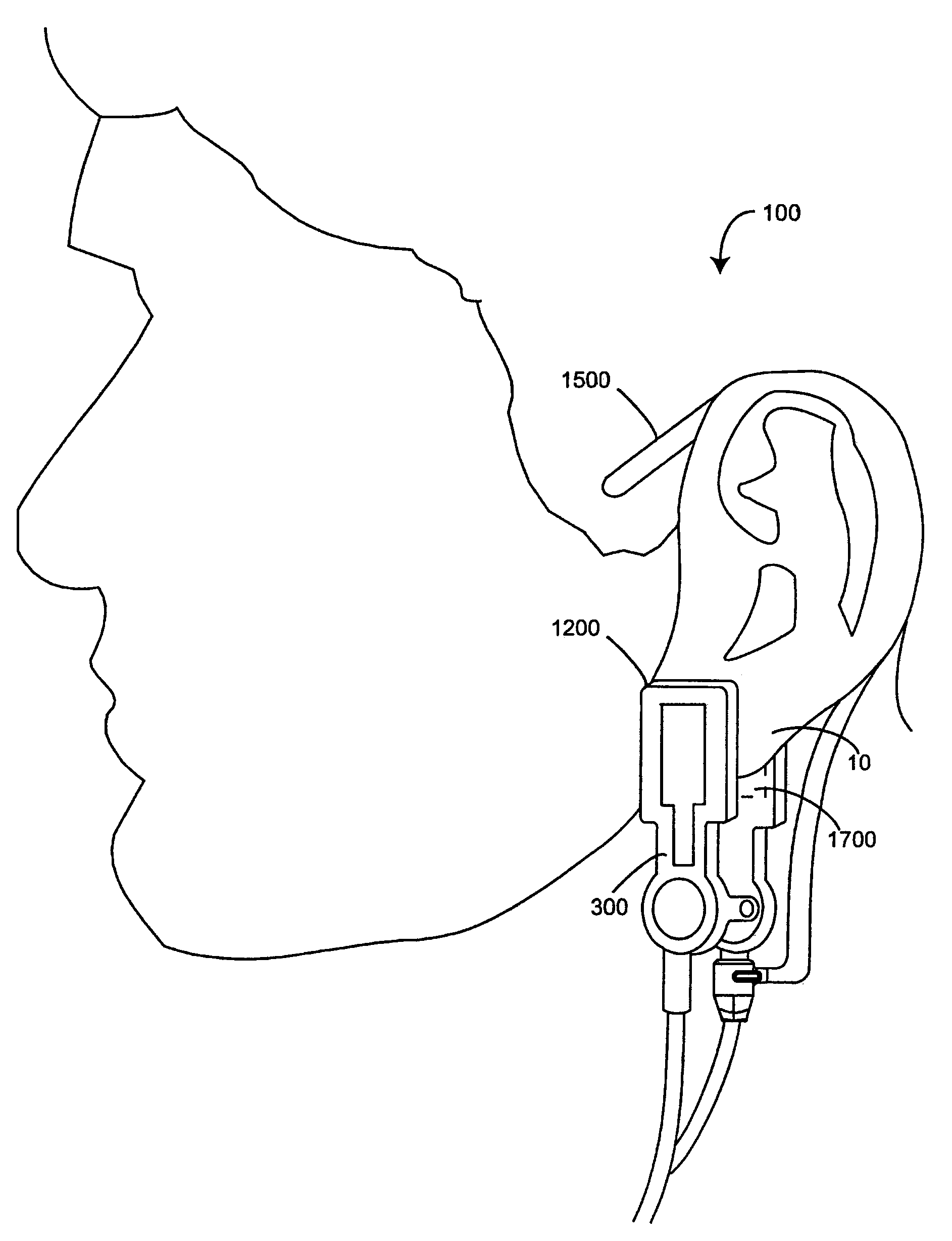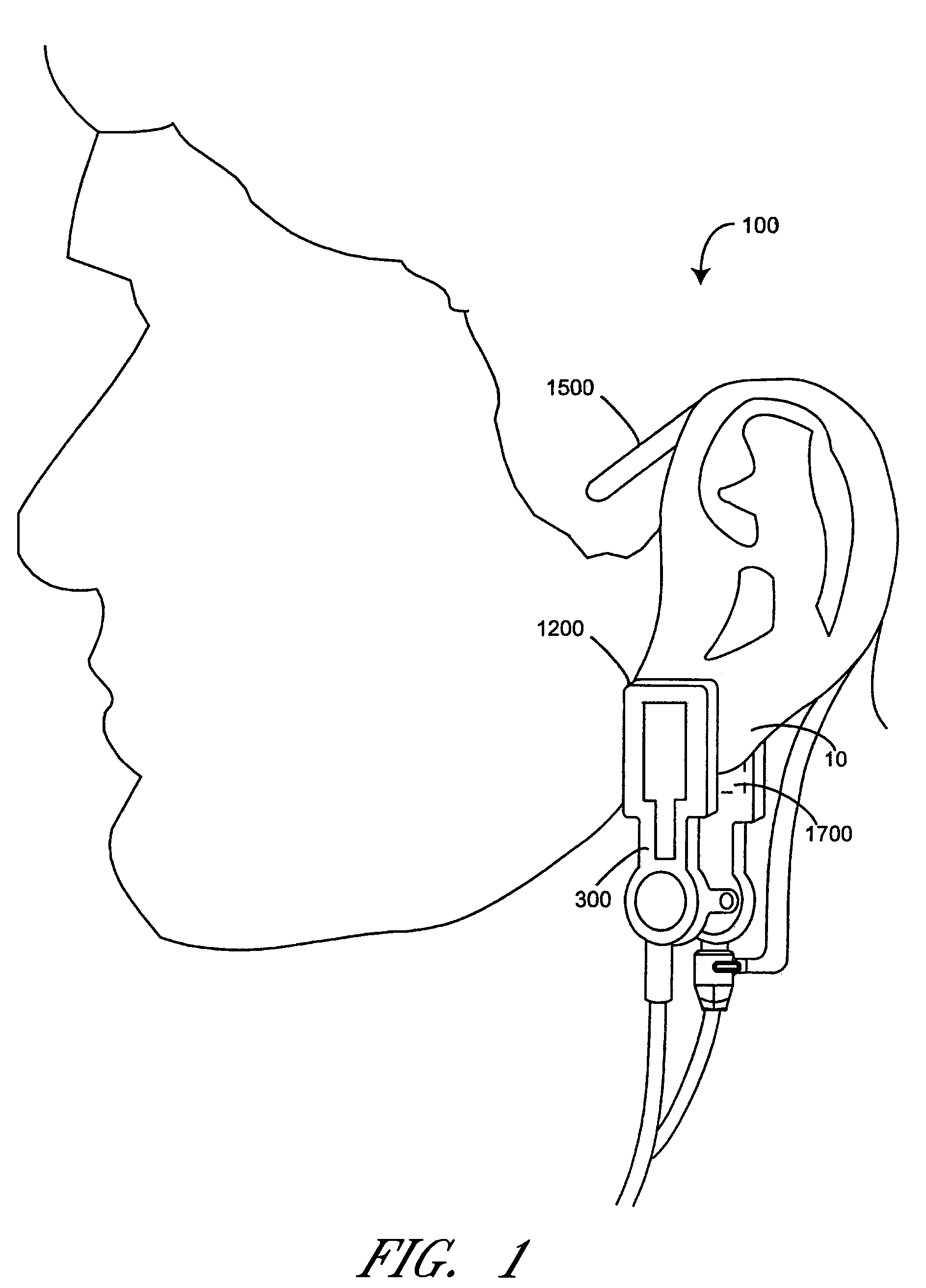Pulse oximetry ear sensor
a pulse oximetry and ear sensor technology, applied in the field of medical devices, can solve the problems of constricting the ear site of conventional ear sensors, and achieve the effect of constricting the ear site and fast respons
- Summary
- Abstract
- Description
- Claims
- Application Information
AI Technical Summary
Benefits of technology
Problems solved by technology
Method used
Image
Examples
Embodiment Construction
[0032]To facilitate a complete understanding of the invention, the remainder of the detailed description describes the invention with reference to the drawings, wherein like reference numbers are referenced with like numerals throughout.
[0033]FIG. 1 illustrates a pulse oximetry ear sensor assembly 100 attached to an ear monitoring site 10. The ear sensor assembly 100 includes an ear sensor 300, a replaceable clip 1200, an ear hanger 1500 and adhesive tabs 1710. The clip 1200 advantageously has a relatively low spring tension and the area of the ear sensor 300 that contacts the ear is relatively large compared with conventional ear sensors, allowing longer monitoring on the ear by reducing patient discomfort and pressure necrosis. To provide secure sensor attachment to the ear site 10, the ear sensor assembly 100 optionally utilizes an ear hanger 1500 and adhesive tabs 1710, individually or in combination, to supplement the clip 1200. The ear hanger 1500 goes around the ear, much lik...
PUM
 Login to View More
Login to View More Abstract
Description
Claims
Application Information
 Login to View More
Login to View More - R&D
- Intellectual Property
- Life Sciences
- Materials
- Tech Scout
- Unparalleled Data Quality
- Higher Quality Content
- 60% Fewer Hallucinations
Browse by: Latest US Patents, China's latest patents, Technical Efficacy Thesaurus, Application Domain, Technology Topic, Popular Technical Reports.
© 2025 PatSnap. All rights reserved.Legal|Privacy policy|Modern Slavery Act Transparency Statement|Sitemap|About US| Contact US: help@patsnap.com



